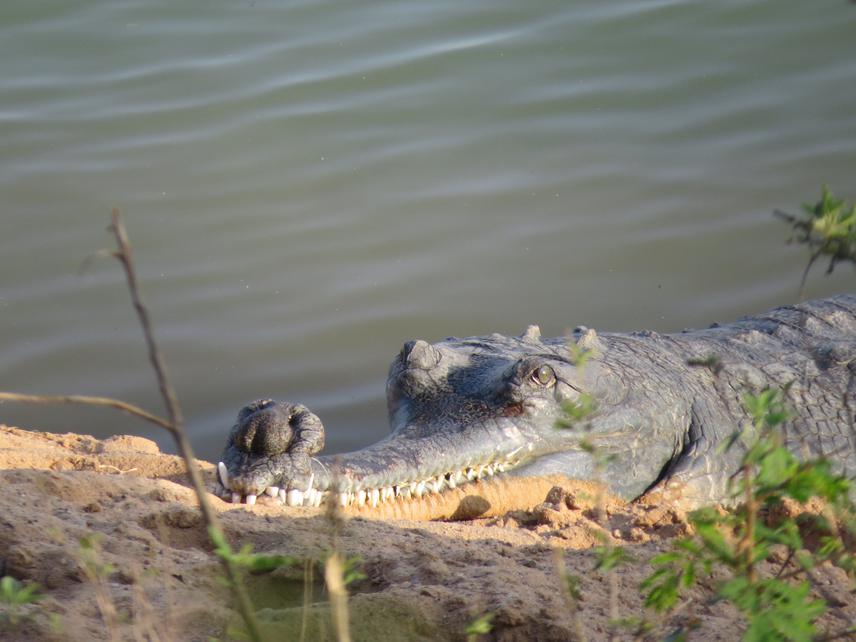Tarun Nair
This project aims to assess the current conservation status of gharial populations and their habitats in four tributaries (Rivers Ken, Son, Gandak and Kosi) of the Gangetic River System.

Adult male gharial, Son River.
While regular population monitoring has been on-going in the National Chambal Sanctuary, and to a certain extent in Katerniaghat Wildlife Sanctuary and Corbett Tiger Reserve, virtually nothing is known from the rest of the gharial’s range in India. To address this shortcoming, the Gharial Species Recovery Plan, and the IUCN’s Gharial Status Survey and Conservation Action Plan suggest an overall assessment of the status of existing populations to be used as a baseline for measuring the effectiveness of past recovery efforts. As part of the range-wide assessment planned for the species, we seek to assess the current conservation status of gharial populations and their habitats in the Rivers Ken, Son, Gandak and Kosi.
We will examine locations within our study area for their potential to re-establish gharial populations, and also explore a range of local conservation strategies that can be sustained in the long-term. This project will provide a status update on gharials, threats to gharial populations, incidences of gharial - fisher conflict from the study area; and an assessment of the riparian habitat and its viability for long-term gharial conservation. The study area provides seasonal habitat to gharials, especially during the monsoonal floods; acts as a population sink to emigrating recruits from the National Chambal Sanctuary; and may throw light on the fate of several hundred gharials that have been released in the National Chambal Sanctuary and Nepal’s Chitwan National Park as part of the rear - and - release / restocking programmes.
In light of the conservation challenges facing the gharial, and the fact that large parts of our study area are outside protected areas, it is necessary that local conservation strategies be developed collaboratively with local residents and government institutions. There are no long-term management or conservation plans for this region, and our study hopes to provide the basis for such a plan.